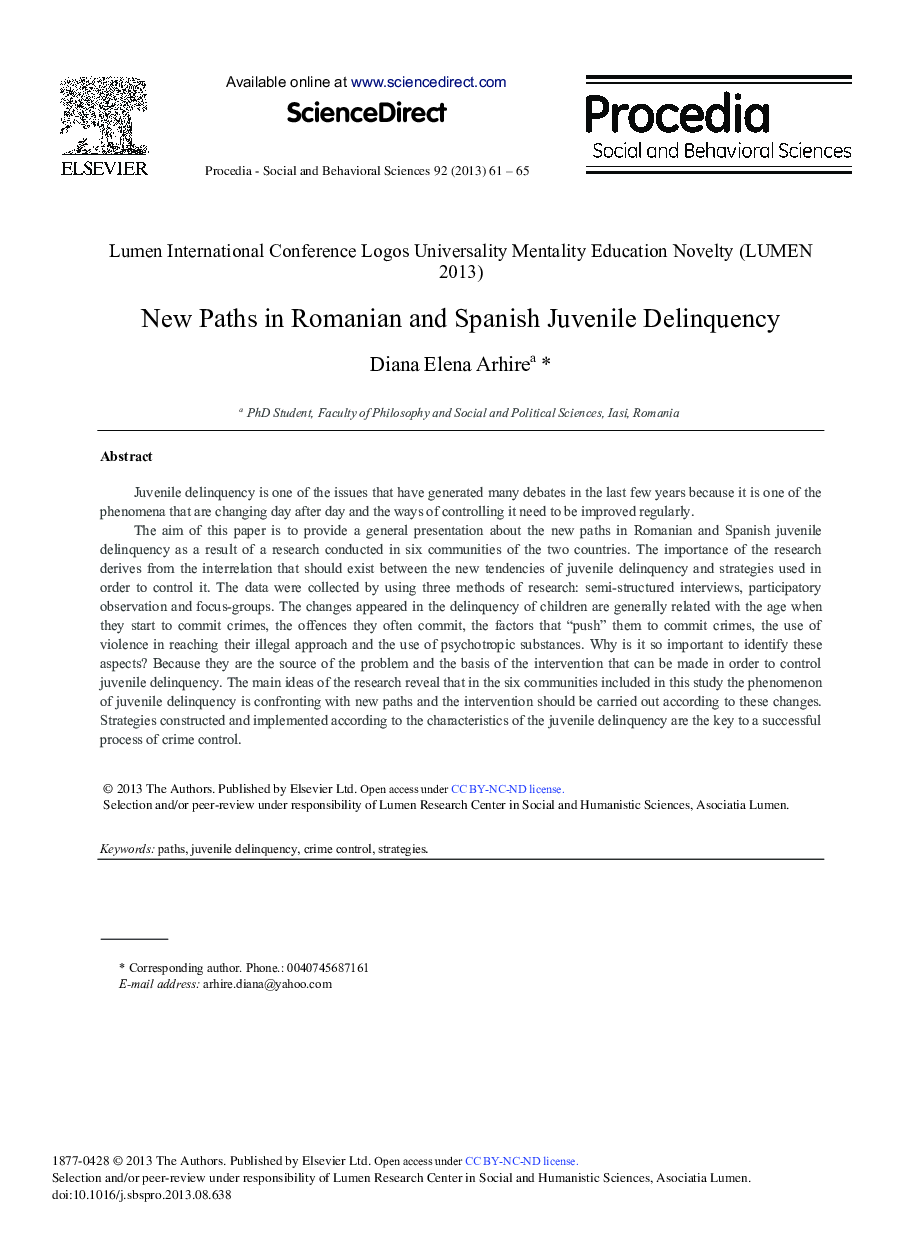| کد مقاله | کد نشریه | سال انتشار | مقاله انگلیسی | نسخه تمام متن |
|---|---|---|---|---|
| 1117894 | 1488467 | 2013 | 5 صفحه PDF | دانلود رایگان |

Juvenile delinquency is one of the issues that have generated many debates in the last few years because it is one of the phenomena that are changing day after day and the ways of controlling it need to be improved regularly.The aim of this paper is to provide a general presentation about the new paths in Romanian and Spanish juvenile delinquency as a result of a research conducted in six communities of the two countries. The importance of the research derives from the interrelation that should exist between the new tendencies of juvenile delinquency and strategies used in order to control it. The data were collected by using three methods of research: semi-structured interviews, participatory observation and focus-groups. The changes appeared in the delinquency of children are generally related with the age when they start to commit crimes, the offences they often commit, the factors that “push” them to commit crimes, the use of violence in reaching their illegal approach and the use of psychotropic substances. Why is it so important to identify these aspects? Because they are the source of the problem and the basis of the intervention that can be made in order to control juvenile delinquency. The main ideas of the research reveal that in the six communities included in this study the phenomenon of juvenile delinquency is confronting with new paths and the intervention should be carried out according to these changes. Strategies constructed and implemented according to the characteristics of the juvenile delinquency are the key to a successful process of crime control.
Journal: Procedia - Social and Behavioral Sciences - Volume 92, 10 October 2013, Pages 61-65